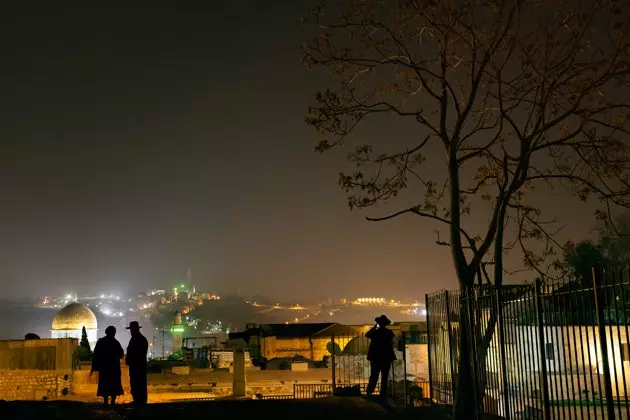
Jerusalem, universal desire
I leave Tel Aviv airport on my way to Jerusalem and, without having entered the city yet, I know that this trip will be one of the most special of my life. The young Jew (given the kippah on his head I have no doubt that he is) who was sitting on the plane two rows in front of me, completely dressed in white and wearing an anecdotal Real Madrid sweatshirt, is greeted by more than one dozen people (same yarmulke, same outfit, but without the sweatshirt) with drums and tambourines. A girl from the dynamic group explains to me in English that the priority objective in the life of a Jerusalemite is to be happy . It seems strange to me to focus the idea of happiness in a city where so many things have happened, many of them terrible.
Jerusalem it is not only a city of which there are written references from 1800 a. of C., it's an idea . As one of its many conquerors, Saladin, said, Jerusalem is “Nothing. All" ; it is the world of men who seek to understand and understand each other, often brutally, seldom sensibly.
The next day, with an imposing perspective of the city from the height provided by the l Mount of Olives and the church of Gethsemane , I am aware of how the Jewish, Christian and Muslim worlds intersect in a visual babel seemingly crammed into just 120 square kilometers . Our local guide tries - and succeeds - to explain the eventful life of Jerusalem from the time of King David to here. How the capital of Israel has been conquered and reconquered up to 50 times and how its prodigious architectural and mystical structure has been able to stand up with all its beauty and all its magnetism.
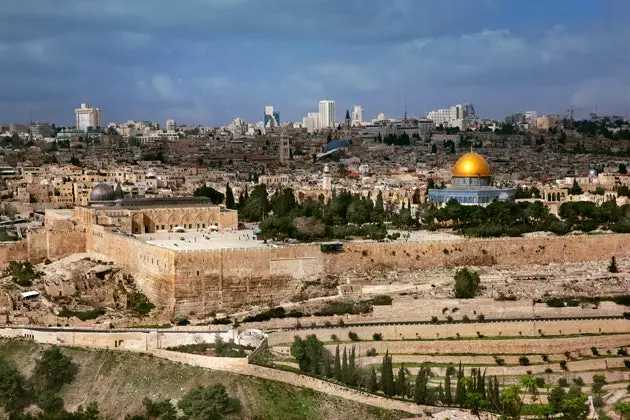
bird's eye view of jerusalem
The concentration of energy is a physical fact , you feel something special, you are walking and in every corner a piece of soul is removed. ** They call it the Jerusalem syndrome **, and I say that thousands of years, so many falls and stone-on-stone starts, activate one of the essences of the human being: the eternal search for the infinite being. There is a clear conclusion that the passing of days will confirm for me: here it is not necessary to be Catholic to feel the emotions of Christian reality It is not necessary to be a Jew to immerse yourself in its traditions and in its mystical knowledge, it does not matter if you do not know the precepts of the Koran to understand some of the fundamental whys and wherefores of its religion.
Today I am here, and tolerance, intention and the ability to breathe with a clear mind are my three great incentives to feel this trip as a unique opportunity. Not the relaxing trip, not the idyllic beach, not the obvious luxury . Yes to everything that makes us spiritual beings, transcendent and at the same time infinitely vulnerable . Being in Jerusalem is being aware that history is not only written in books, and that its particular geography has been important in this universal puzzle.
Located in the Judean mountains, between the Mediterranean Sea and the northern shore of the Dead Sea, Jerusalem is not at first glance a welcoming city in the tourist sense of the word, but neither is it a cold city. She is intimate and hermetic, she lives inward, withdrawn into herself, impression that assailed me from the moment I entered the city from noisy Tel Aviv: Saturday noon, with the taxi through an almost deserted Orthodox Jewish neighborhood.
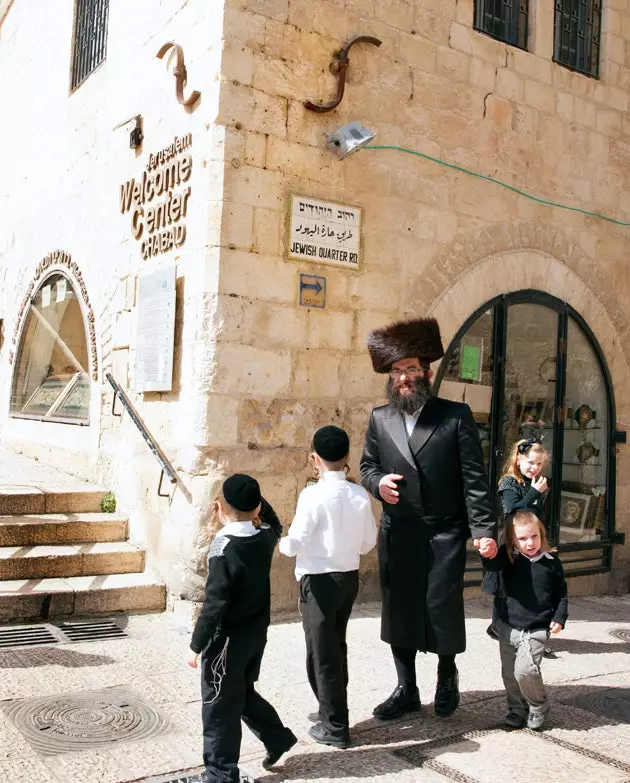
jewish quarter
**Today is Sabbath**, holy day of the Jewish week, and therefore the compulsory and widely respected day of rest . From Friday afternoon to Saturday night, that includes not being able to cook, wash, use electrical appliances, start a car or drive, to cite everyday examples. At the Mamilla hotel, where I am staying, one of the elevators is indicated for use on the Sabbath: instead of pressing a button to what height you want to go up, that day it automatically stops at each and every one of the floors, for what you do not have to do anything to reach the destination: just wait for your plant. One of the many ways to circumvent the prescriptions of the Torah without failing to comply with them.
When Saturday night arrives in the Old City, the streets begin to bustle with places open until very late and visitors wanting to have fun . It is known as the city of eight gates : one of them remains tightly closed awaiting the arrival of the true messiah of the Jewish people and through the other seven one enters directly into that other world that represents Jerusalem. Perhaps the ninth was already beginning to open in my mind, because I cross the New Gate, which leads directly to DavidSt. , where traditional shops mix with a wide Western offer.
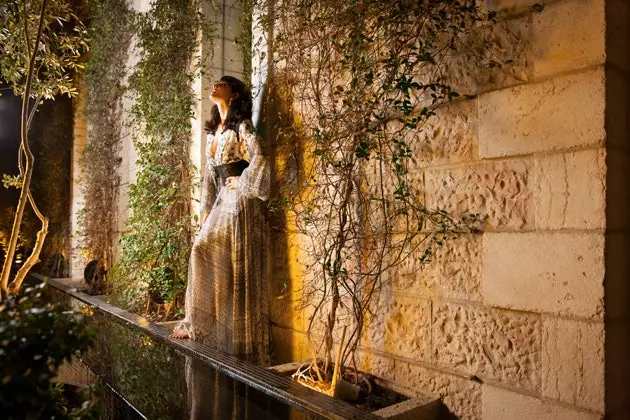
Barbara Lennie at the Mamilla Hotel
Although the autochthonous prevails, especially with religious, mystical or cabalistic connotations, the souvenirs of the three religions, of the three cultures, are mixed with t-shirts of Marilyn, Lennon or Che . The slope of cobbled stairs between David St. and the Via Dolorosa and the alleys that lead from there to the Jewish quarter, the Muslim quarter, the Christian quarter, the Armenian quarter, form an authentic universe of stalls and shops . The alleys are prepared with stone wedges so that the bread and fruit carts reach their destination every day in this enormous labyrinth. Silk cushions, fabrics, djellabas and menorahs (seven-branched chandeliers) are displayed among stalls selling hummus and fruit juices.
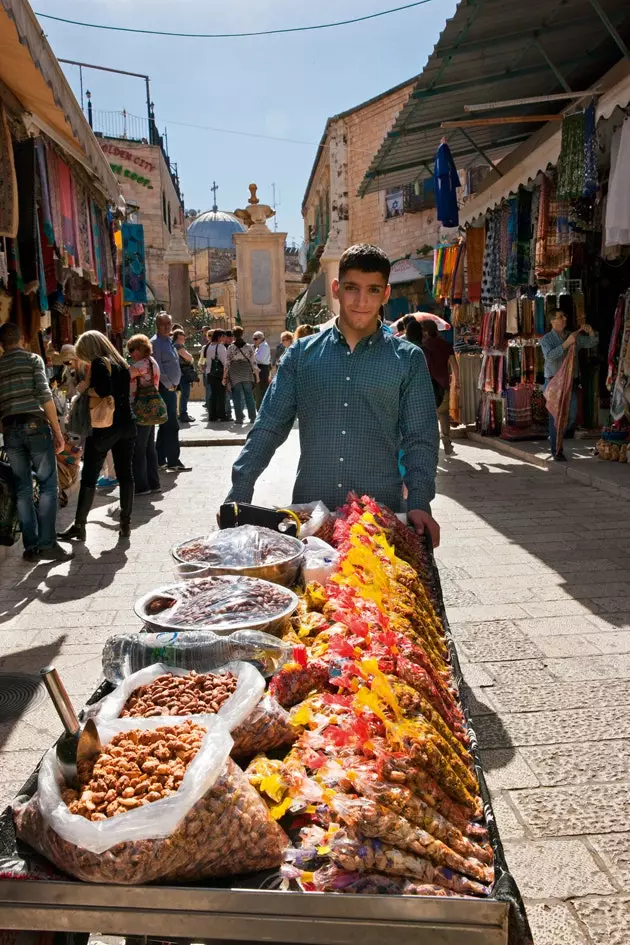
Spice merchant in the alleys of Jerusalem
Nowhere have I seen such a variety of breads as here. And of antique dealers who you really don't know whether to believe or buy. But whatever you seek, rest assured that here you will find it . This is the case of the local Omar Sinjlawi, of Palestinian origin, on the same David St., a true museum of objects of all kinds able to open throughout its rooms. He emphasizes to me that his great achievement is to maintain his family's business, which has been inherited from generation to generation. It also boasts of having right there, visible to tourists, an own well filled with water that is more than 2,100 years old . Almost as many as the objects in the shop run by a Jewish Palestinian on that same street, a little further up the street, whom I always saw walk after walk clinging to a microscope cleaning some ceramic and metal pieces that he assures me are from the Copper Age.
The commercial spirit of Jerusalem is wonderful for those who love to haggle , and a nightmare for those who do not know how to discuss a price. The meetings and relationships you have with a merchant, who greets you in your language because he remembers you perfectly from the day before, his way of trying to sell you his product, dialectical skill, insistence Everything is more important than the purchase itself. Conclusion: either you are very clever or you find dozens of objects in your suitcases that you don't really know why you bought them. And that also has its grace.
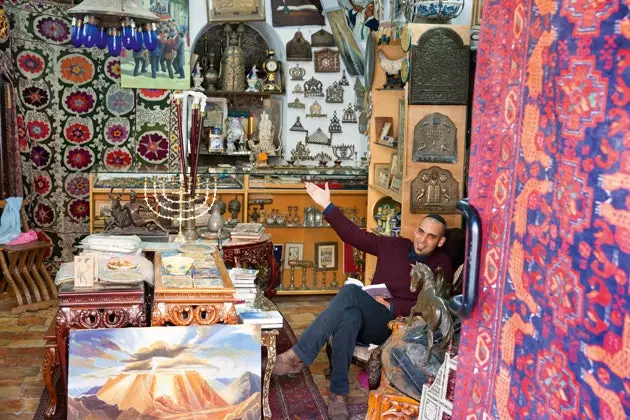
Omar Sinjlawi Antique Shop
To get into everyday life, there is nothing like the great market of Majane Yehuda, already in the New City, where you can buy a kilo of tomatoes as well as a white gold pendant. Among its stalls, erected on the covered commercial ground floor of a couple of blocks, It takes advantage of every last corner.
An old merchant, from whom I buy a salad dressing made from nuts and something called 'Dragon's Egg' , he proudly tells me that some of his products are sold all over the world with great success, such as avocado and sweet potato, which in Israel are reputed to be the most exquisite and tasty. Strolling among the colorful stalls is a game between joy and confusion, an elementary and exotic experience . From there, by tram or on foot, you can cross the city's main commercial artery, Jaffa St.
Although due to the antiquity of the city the most emblematic places are within the walls, Jerusalem does not hide its most modern and contemporary facet . People — I would never have imagined it — smile, talk to you, point things out to you. It seems like a town in search of a future that in no way can or wants to give up its portentous past. Difficult equation, but they get a very attractive mix. It's there to prove it Mamilla shopping center , one of the few places in the city capable of taking you back to Europe without having to take a plane, or nahalat shiva , the third neighborhood founded outside the Old City, a hive of young and beautiful people, the other center of the city with bars, cafes and theaters where the local cinema is seen with pride, although Hollywood has its niche. According to the cinephile owner of the restaurant Pini's Kitchen (located on the main street of what was a German neighborhood in the Ottoman period), Emek Refa'im , Pedro Almodóvar premieres each work with considerable success. Most of the businesses in these city arteries have public access Wi-Fi.
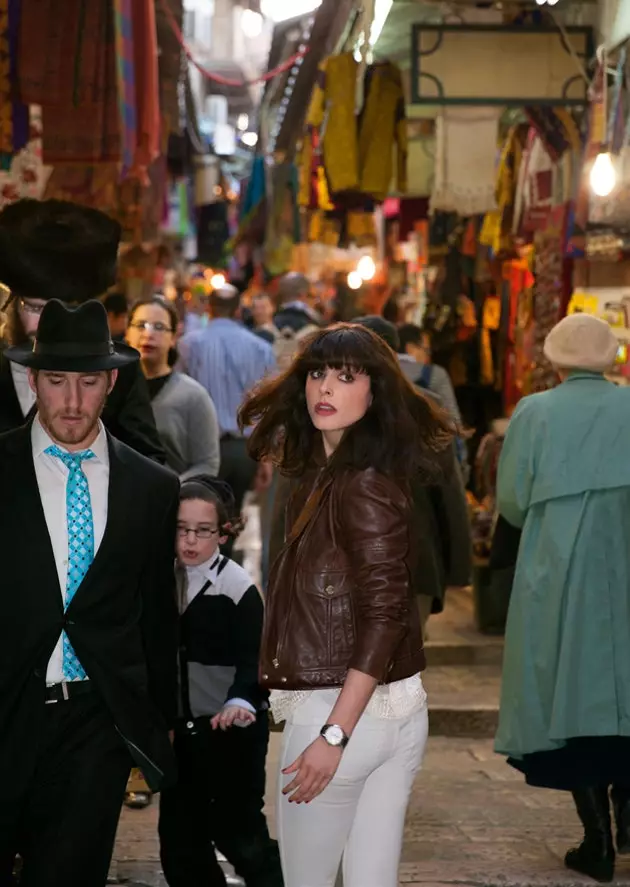
Barbara Lennie among the alleys of Jerusalem
If already in the souk the intersection of religions and cultures was clearly noticed with the Jewish, Christian and Muslim streets perfectly defined and finally linked to each other, the divisions in the neighborhoods are much clearer . Cordiality is discovered as mutual ignorance. Cross-relationships are scarce, each one goes to their own and there is little exchange of words and glances.
Normally, the different communities play their role according to their number of inhabitants, but in the end it is not just about how much but how, something for which an example is enough: according to Fray Artemio Vítores, superior of the convent of San Salvador and vicar of the Custody of the Holy Land, Christians make up only 1.4% of Jerusalem's population . At first no one would say it, but scratching my memory I remember that those two friars who were walking under the Damascus Gate one afternoon looked like two sheep that had lost their flock in the midst of a crowd of Muslims, Orthodox Jews and Israeli policemen.
The path of Christianity begins in the Mount of Olives and the Ascension of Jesus , under whose small dome, according to history, an Our Father was prayed for the first time, translated over time into more than 100 languages. From here the view is one that looks at the heart and notice the madness of this conquered, reconquered, walled and resplendently beautiful city despite what you know, what you intuit, what you feel.
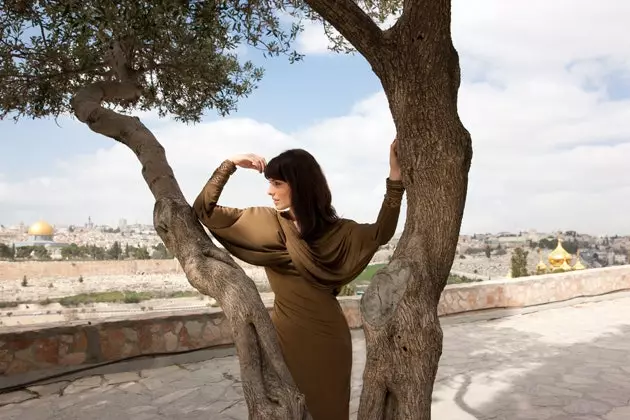
Barbara Lennie on the Mount of Olives in a Givenchy dress
Here around me there are those olive trees that have seen so much history , much more than the gethsemane basilica , where, according to tradition, Jesus prayed after the Last Supper, and whose current construction is very recent, between 1919 and 1924. The interior is dark, like all great Christian temples. The silence of the surrounding gardens is slightly broken by the conversations of the tourists. Devotion is breathed inside, there are not even murmurs. For a believer to get here is to enter the origin of faith , set foot on it. For non-believers it is also a special place, where it is difficult to abstract from that spiritual energy. I myself, who do not practice any religion, I sit in silence, impressed by everything around me.
On a huge stone next to the altar, where history says that everything happened, there are dozens of people. I imagine them in the churches of their cities, their neighborhoods, praying to a God that here they long to touch with their fingertips. A few meters away is the Cenacle, where the Last Supper was celebrated , and where mass has not been practiced since 1523, but it will officiate again in the coming months if the intention of Pope Francis comes true.
I return to the city and cross the Via Dolorosa , more beautiful in the photographs he had looked up on the internet than in reality, but undeniably interesting. I slowly follow nine of the fifteen stations of the Via Crucis , the same ones that take me to the door of the Holy Sepulchre, the true sanctuary of Christianity. Under the custody of Armenian Orthodox, Orthodox Catholics and Romans, this place is the exact spot where Jesus Christ was crucified, buried and later resurrected. The labyrinth of small chapels of the basilica keep the energy of all those who visit it.
Even if you want to be skeptical, even if you have another vision of history, even if you intend to make this place a simple tourist visit, you will not be able to. It is stronger than you. Much more powerful. As you walk through the gate, another huge rock-shaped blob rises up from the ground. According to history, Here the body of Jesus touched the ground when descending from the cross, and the visitor can practically lie on it before entering the enclosure of the Holy Sepulchre. The faithful kneel down, extend their arms and, it seems, Russian Catholics who want to be mothers even carry some underwear in their bag because they believe that, in contact with this soil, it will make them more fertile. Those who simply want to know him are inside a beautiful monument where something intangible forces meditation and respect.
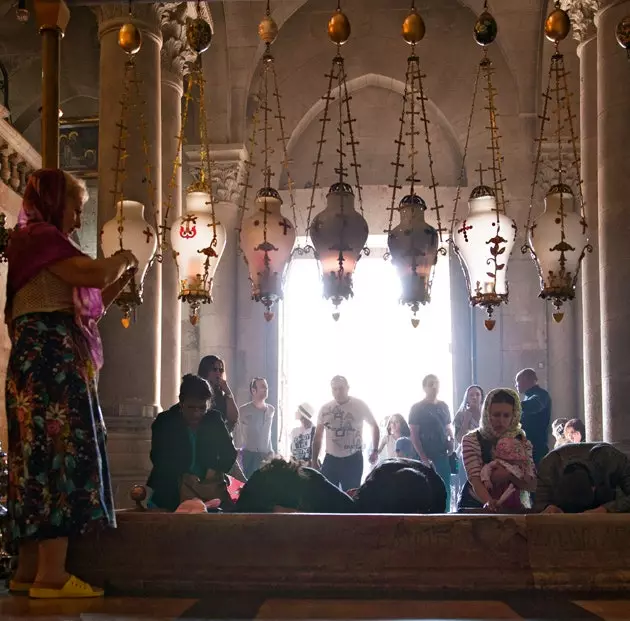
Holy Sepulcher, a place of obligatory meditation and introspection
the next day i walk to the jewish quarter , a few blocks from the Christian epicenter. Its uncluttered beauty puts you on the map instantly. The blame lies largely with the dozen synagogues scattered around the neighborhood , little more than 2,000 inhabitants who maintain their domains in perfect condition (although they have suffered those famous 50 conquests of the city like the rest), but above all —after experiencing the devastating consequences of the Six-Day War in 1967— their recent rehabilitation. And you can see it.
That's why when its streets open to Ha-Tamid St., with a large golden menorah, with the Esplanade of the Mosques and the Wailing Wall ahead, Jerusalem reminds you that spirituality is in every corner, from every perspective. As in the Christian zone, there is no problem in visiting the holy places of Judaism freely.
The same does not happen in the Muslim Dome of the Rock, whose esplanade is only open for a few hours a day and whose temples are only available to Muslims, who may have to identify themselves by remembering a passage from the Koran. When the Jew prays at the Wall, it is evident that only he - and his sacred song - is there. And he not only occupies the little more than 60 meters, divided into two parts for men and women , which can be seen with the naked eye. I walk quietly through the inner adjoining synagogue and through the underground tunnels, where the Wall plunges into the bowels of the city.
I am guided by an American Jewish woman named Batya, who tells the story of this amazing place over and over again every day with the enthusiasm of a beginner. It amazes me how she intersperses her historical discourse with her personal experiences: one of her daughters, married and with a complicated economic situation, managed to live in her dream house because she asked for it at the Wall . So, since he who doesn't bet doesn't win, on my way out I take one of the hundreds of yarmulkes that are in the male access and leave my dream written in the deepest crack that opens between two rocks. There he will be.
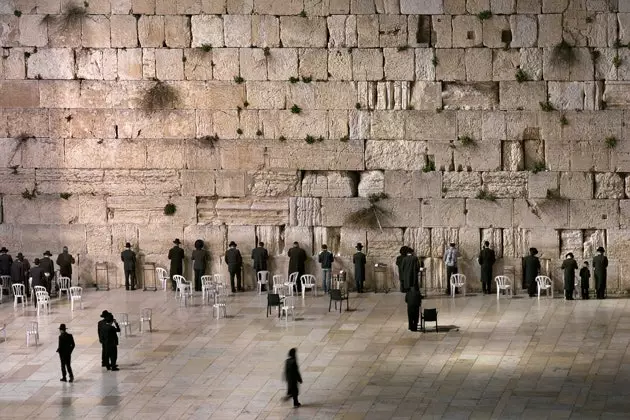
wailing wall
But Jerusalem is loaded with so much history that stirs strongly when it takes you to the most complicated moments of her story, when the past decides to slap you in the face. The era of Nazi Germany hit the Jews with the force of a steamroller , and the city has concentrated on the Holocaust Museum , yad vashem , the most terrible face of a story that becomes a stark reality when I enter and go through the different rooms where testimonies of one of the worst horrors of humanity are exhibited. And where I realize that all this has happened recently , that we speak of a recent chapter of our life, with thousands of survivors who are still among us, and many are inhabitants of Jerusalem.
Of all the museums that can be visited in the world, I think that few are capable of removing body and heart in this way : remnants of the books that survived the general burning, the photos of Einstein or Freud expelled from their university classes for being Jewish, the actual bricks, rails and lampposts of the Warsaw ghetto, the broken toys that accompanied some of those children in their hiding places, the process that defenseless human beings followed after their incarceration in concentration camps, the harassment, the experiments. The systematic extermination...
there's the Hall of Names , where the photos of some of those victims are randomly placed, surrounded by filing cabinets with registered names but also empty shelves, because the work is not over yet. It never quite ends. Perla B. Hazan is the director of the museum for Latin countries, and today she is in charge of making my way on my journey. Born in Melilla, she is married to one of those survivors. I ask her how she lives surrounded by so much pain every day. "Looking for the light, and working so that this is not forgotten, and above all it is never repeated" , she answers me while we walk through the Square of the Just , a place in the sun a few hundred meters from the museum that pays tribute to non-Jews who risked or gave their lives to help them, such as the Oscar Schindler from the Spielberg movie, buried in the Catholic cemetery a few meters away.
I return to the city, I enter through one of its doors, I continue to open my mind through the narrow alleys full of people who are looking for or who have found the key to this magnetic, hermetic city, in which it is possible to understand the history of humanity . The Latin Patriarch of Jerusalem already commented on this to the British commander on the day his command ended, in 1948, and handed over the keys to the city with tears: “For you it is a very important day. For Jerusalem, it is another day.”
- This article is published in the May 73 Condé Nast Traveler magazine. This issue is available in its digital version for iPad in the iTunes AppStore, and in the digital version for PC, Mac, Smartphone and iPad in the virtual newsstand of Zinio (on Smartphone devices: Android, PC/Mac, Win8, WebOS, Rim, iPad) .
*** You may also be interested in...**
- Waiting for the end of the world in Jerusalem
- On Sabbath. In Jerusalem. In a hotel
- From Florence to Jerusalem: cities that cause syndromes
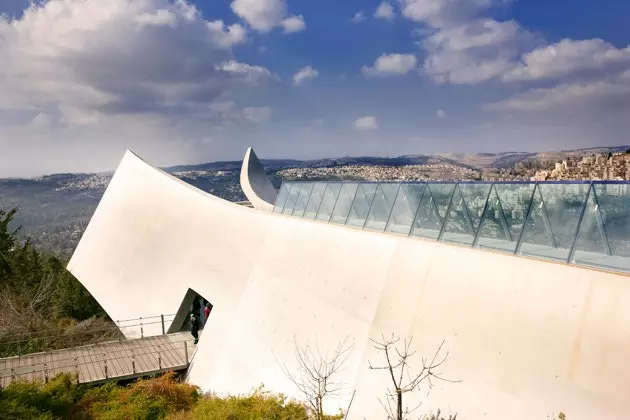
Holocaust Museum
